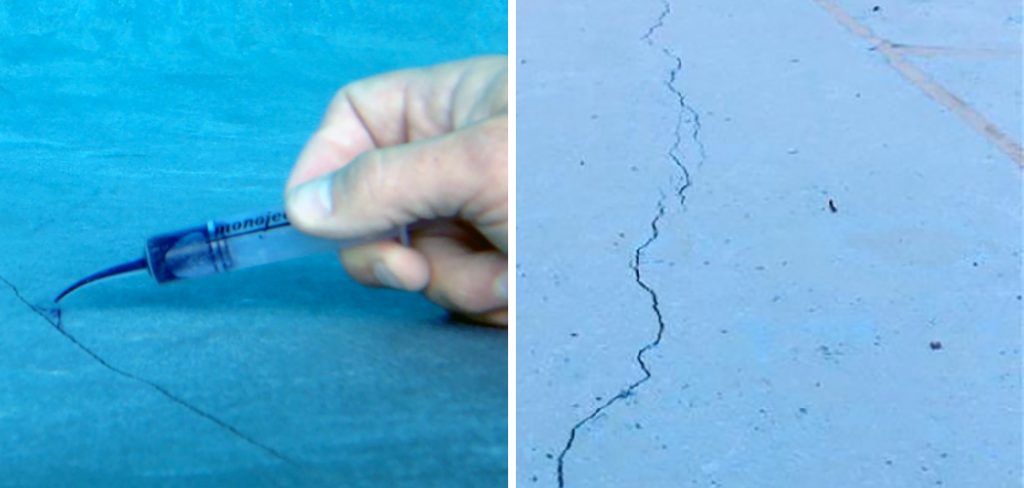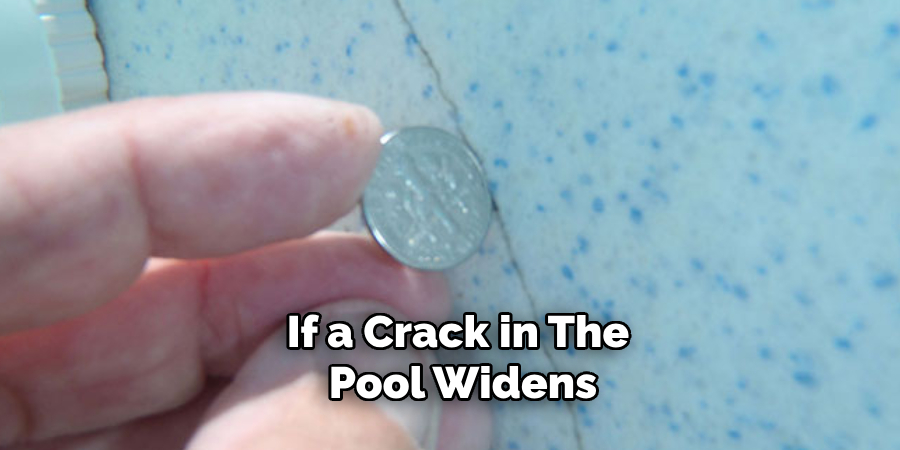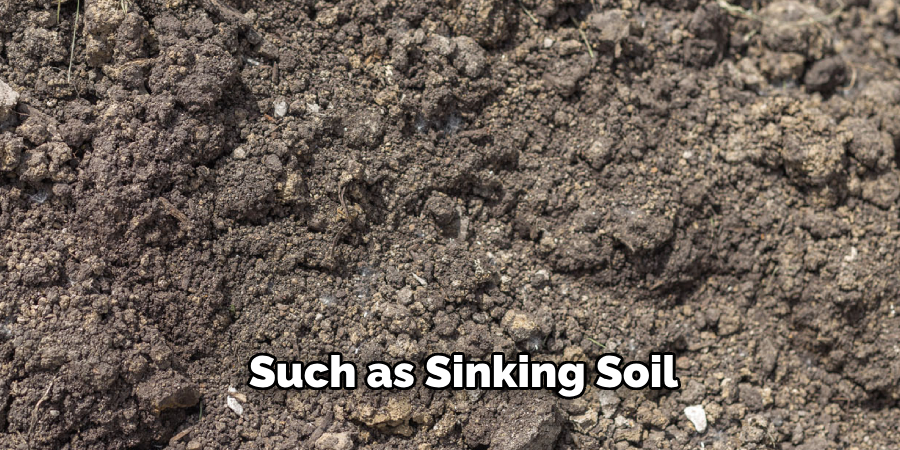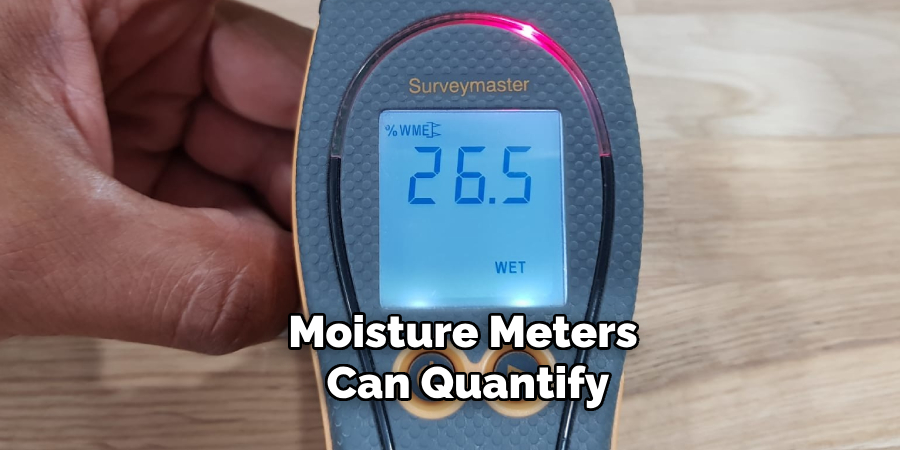Identifying whether a crack in your pool is merely cosmetic or indicative of structural damage is crucial for maintaining the safety and integrity of your aquatic oasis.

While all cracks may seem concerning at first glance, distinguishing between superficial surface imperfections and more serious structural issues requires a keen eye and understanding of key indicators.
In this comprehensive guide, we’ll delve into how to tell if pool crack is structural.
From assessing the size, location, and direction of the crack to examining surrounding features such as tile displacement and water loss, you’ll gain valuable insights into diagnosing the severity of the situation. Armed with this knowledge, you can confidently address any necessary repairs, ensuring the long-term stability and enjoyment of your pool for years to come.
Understanding Pool Cracks
Pool cracks can broadly be classified into two categories: structural and non-structural (or surface) cracks. Structural cracks are those which affect the integrity and stability of the pool’s construction. They often extend through the concrete shell of the pool, potentially leading to serious issues such as leaks that compromise the pool’s structure.
On the other hand, non-structural cracks are typically confined to the surface layer of the pool’s finish.
These are usually less serious and often result from regular wear and tear or shifts in temperature. Being able to distinguish between these two types of cracks is the first step towards effective pool maintenance and repair.
Importance of Identifying Structural Cracks
The significance of accurately identifying structural cracks in a pool cannot be overstated. Structural cracks, unlike superficial ones, compromise the pool’s integrity, leading to potential safety hazards for users and potentially extensive property damage.
Early detection and repair of structural issues are vital to prevent small cracks from evolving into major problems, which can be costly and time-consuming to rectify.

Furthermore, understanding the nature of the cracks can inform the appropriate repair methodologies, ensuring that the pool’s structure is restored to its optimal condition.
Addressing structural damage promptly also helps in maintaining the pool’s aesthetic value and ensures that it continues to be a safe and enjoyable place for family and friends to gather.
Detecting Structural vs. Non-Structural Cracks
To further distinguish between structural and non-structural cracks within your pool, it’s essential to consider several factors that might influence your assessment. Here are some tips to help you identify the nature of the crack:
- Observe the Crack’s Location: Structural cracks are more likely to be found in critical areas, such as the pool’s foundation or around the skimmer. Non-structural cracks, meanwhile, often appear on the pool’s surface or in the finish materials.
- Measure the Crack’s Width: Generally, wider cracks (those wider than a quarter inch, for example) can indicate structural issues, especially if they extend deep into the pool’s surface.
- Inspect for Leaks: Water loss beyond evaporation rates might suggest that a crack has penetrated through to the structural elements, causing leaks.
- Check for Pattern and Direction: Cracks that run in a straight line or display a stair-step pattern, especially those following the lines of pool walls or flooring, are often signs of structural distress.
- Be Aware of Other Signs: If you notice tiles popping off or the deck sinking around the pool, these can be indicators of underlying structural problems contributing to the appearance of cracks.

Understanding these differences sets the stage for appropriate responses to pool cracks, whether that entails simple surface repairs or more extensive structural interventions.
Potential Consequences of Structural Pool Cracks
Failing to address structural pool cracks can lead to a variety of serious consequences that extend beyond the immediate aesthetic deterioration. One of the most pressing issues is the risk of water leakage, which can result in substantial water loss.
This not only increases water bills but can also undermine the pool’s structural integrity by eroding the soil beneath the pool, potentially causing uneven settling or substantial ground movement. Additionally, as water seeps through cracks, it can reach and damage the pool’s underlying support system and surrounding property, leading to costly repairs.
Another significant consequence is the increased risk of injury to pool users. Sharp edges of cracks can pose physical risks, while the compromise to the pool’s structural integrity can lead to unexpected collapses or failures, endangering anyone in or around the pool at the time. Furthermore, structural cracks can create openings for algae and bacteria to grow, leading to poor water quality and potential health hazards.
Long-term, the presence of untreated structural cracks can drastically reduce the lifespan of a pool, escalating the need for complete renovation or replacement. This can significantly diminish the property value, affecting the overall investment in the home and its appeal to potential buyers. Immediate and effective repair of structural cracks is therefore imperative to maintain the safety, functionality, and value of a swimming pool.
Signs of Structural Pool Cracks

Identifying the signs of structural pool cracks early can save pool owners from future headaches and costly repairs. Here are key indicators that a crack in your pool may be structural:
- Widening Cracks: If a crack in the pool widens over time or seems to penetrate deeply into the pool structure, it’s a clear sign of a structural issue. Regular monitoring of crack width can help determine if the problem is worsening.
- Cracks that Extend to the Pool Deck: Cracks that are not confined to the pool itself but extend to the surrounding deck area indicate ground movement or settling that could be compromising the entire pool structure.
- Water Level Fluctuations: Unexplained water loss that cannot be attributed to evaporation or normal use may suggest that a structural crack is allowing water to escape from the pool.
- Visible Movement: If there is visible shifting of the pool structure or the area around the pool, it suggests that the underlying earth is moving, which can cause structural cracks.
- Sounds of Cracking or Popping: Unusual noises coming from the pool area, such as cracking or popping sounds, can indicate shifting or cracking of the structural components.
- Uneven Pool Floor: Dips, bulges, or unevenness in the pool floor can be a sign of structural damage affecting the pool’s foundation.
By paying close attention to these signs, pool owners can identify structural cracks early and take proactive steps to address the issue before it escalates into a major problem, ensuring the longevity and safety of their swimming pool.
Surrounding Damage or Distortion

Structural damage to a pool can often extend beyond the immediate area of the cracks themselves, affecting surrounding elements of the pool and property. It’s important to keep an eye out for damage or distortion in areas adjacent to the pool, as these can both contribute to and be a result of underlying structural issues. Here are some key areas to monitor:
- Distortion in the Pool Deck: Signs of cracking, sinking, or upheaving in the decking around the pool may indicate ground movement or settling that could be stressing the pool structure.
- Damage to Plumbing Lines: Structural shifts in the pool can lead to broken or leaking plumbing lines, which in turn can exacerbate soil erosion or settlement beneath the pool and decking.
- Landscaping Changes: Noticeable changes in the condition of landscaping around the pool, such as sinking soil or the die-off of plants, could be symptomatic of leaking water from structural cracks affecting the surrounding environment.
- Fencing or Boundary Distortion: Misalignment or damage to fencing, walls, or other boundaries near the pool area may reflect ground movement associated with structural pool damage.
- Damage to Adjacent Structures: Cracks or structural issues in buildings or other structures close to the pool can be both a cause and effect of pool structural problems, especially if shared foundations or proximity play a role.
Monitoring these areas for signs of damage or change can provide essential clues to the health of your pool’s structure and the extent to which it may be affecting or being affected by its surroundings. Identifying and addressing these related issues in conjunction with pool repairs can help ensure a comprehensive solution that restores the entire area’s safety and functionality.
10 Methods How to Tell if Pool Crack Is Structural
Method 1: Evaluate Crack Width and Length
Structural cracks in pools are typically wider and longer than superficial cracks. Use a ruler or caliper to measure the width and length of the crack accurately. Structural cracks are typically wider than 1/8 inch and extend beyond the surface layer of the pool, indicating potential structural issues.

Method 2: Assess Crack Location
The location of the crack can provide valuable insights into its severity. Structural cracks often occur in critical areas such as the pool shell, bond beam, or around fittings and fixtures. Cracks that extend through multiple layers of the pool structure, including the plaster, concrete, or fiberglass layers, are more likely to be structural.
Method 3: Look for Surrounding Damage or Distortion
Examine the area surrounding the crack for any signs of damage or distortion. Structural cracks may cause adjacent tiles, coping stones, or decking materials to become loose, cracked, or displaced. Additionally, look for evidence of bulging or sagging in the pool wall or deck area, which may indicate underlying structural issues.
Method 4: Monitor Changes in Water Level or Pressure
Structural cracks can compromise the integrity of the pool’s water containment system, leading to leaks or changes in water level. Regularly monitor the pool water level and note any unexplained fluctuations. Pay attention to changes in water pressure or the appearance of air bubbles in the pool’s circulation system, which may suggest a structural problem.
Method 5: Tap Test for Hollow Sounds
Perform a tap test along the length of the crack using a rubber mallet or similar tool. Structural cracks often produce a hollow or dull sound when tapped, indicating a separation or void behind the surface layer of the pool. In contrast, superficial cracks typically produce a solid, resonant sound.
Method 6: Conduct a Visual Inspection Underwater
If feasible, conduct a visual inspection of the crack underwater using goggles or a snorkel mask. Look for signs of structural damage such as separation or displacement of pool materials, cracks extending into the pool shell, or evidence of water infiltration behind the pool surface.
Method 7: Utilize Detection Tools and Techniques
Advanced detection tools and techniques, such as Ground Penetrating Radar (GPR), ultrasonic testing, dye testing, thermal imaging, and moisture meters, can provide valuable insights into the extent and severity of structural pool cracks. Consider engaging the services of a qualified pool inspector or engineer to perform these tests for a thorough assessment.
Method 8: Consult a Pool Repair Professional

When in doubt, seek the expertise of a licensed pool repair professional. A professional inspector or engineer can conduct a comprehensive evaluation of your pool’s condition, identify any structural issues, and recommend appropriate repair solutions. They have the knowledge, experience, and specialized equipment to accurately diagnose structural pool cracks.
Method 9: Document and Track Crack Progression
Keep detailed records of your pool maintenance activities, including inspections, repairs, and any observed changes in crack size or appearance. Documenting crack progression over time can help you identify trends and determine whether the crack is stabilizing or worsening. Share this information with your pool repair professional for informed decision-making.
Method 10: Prioritize Pool Maintenance and Safety
Regular pool maintenance and proactive inspection are essential for preventing and addressing structural pool issues. Implement a comprehensive maintenance schedule that includes routine inspections, cleaning, and upkeep of pool equipment and structures. By prioritizing pool maintenance and safety, you can minimize the risk of structural damage and ensure the longevity of your pool investment.
Using Detection Tools and Techniques Effectively
Leveraging advanced detection tools and techniques is pivotal in accurately identifying and assessing the severity of structural pool cracks. Ground Penetrating Radar (GPR) provides a non-intrusive means to explore the depths of the pool structure, offering insights into hidden cracks or voids.
Ultrasonic testing, another sophisticated technique, utilizes sound waves to detect discontinuities within the material, thereby pinpointing areas of concern that may not be visible to the naked eye.
Dye testing is a relatively simple yet effective method where dye is introduced to the pool water.

Its flow pattern is observed; where dye accumulates or is sucked away can indicate the presence of cracks. Similarly, thermal imaging can reveal temperature differences in the pool structure, highlighting potential issues. Moisture meters can quantify the moisture content around the pool area, identifying leak points associated with structural flaws.
Incorporating these tools and techniques into your pool maintenance and inspection regimen can drastically enhance your ability to make informed decisions. It is, however, essential to engage the expertise of professionals proficient in these methodologies to ensure accurate interpretation and application of the results.
Understanding Ground Penetrating Radar (GPR) in Pool Inspection
Ground Penetrating Radar (GPR) is a highly effective, non-invasive technique used in pool inspections to detect and analyze structural issues that are not immediately visible to the human eye.
This advanced technology works by emitting electromagnetic waves into the ground or structure. When these waves encounter a material with different electrical properties, such as a crack or void in the pool’s structure, they are reflected back to the surface, where they are captured by a receiver.
The data collected is then analyzed to provide a detailed image of what lies beneath the surface of the pool structure, allowing for the identification of potential problems like cracks, gaps, or weaknesses within the materials.
One of the most significant advantages of utilizing GPR in pool inspections is its ability to scan large areas quickly while preserving the integrity of the pool’s structure, avoiding the need for invasive and costly exploratory methods.
By implementing GPR, pool owners can gain an accurate understanding of their pool’s condition, enabling them to make informed decisions regarding necessary repairs or maintenance. So, it is a highly recommended tool for thorough pool inspections.
Conclusion
In conclusion, discerning whether a pool crack is structural requires careful observation and analysis of various factors.
By considering the size, location, direction, and surrounding indicators such as tile displacement and water loss, you can make an informed assessment of the crack’s severity. While some cracks may be superficial and easily remedied with cosmetic repairs, others may signal underlying structural issues that demand prompt attention.
Regular inspection and proactive maintenance are essential for preserving the safety and longevity of your pool. Should you suspect structural damage, consulting with a professional pool technician is advisable to accurately diagnose the problem and implement appropriate solutions.
Now that you know how to tell if pool crack is structural. While it does take a few steps each time, hopefully now you understand the process and why it’s worth taking the extra step to make sure your floor is properly cared for. So don’t wait any longer, take action today!
